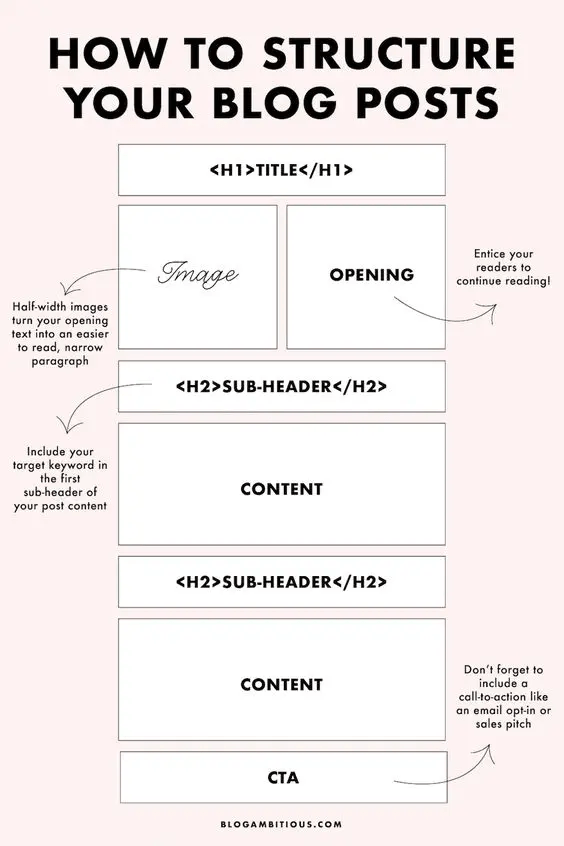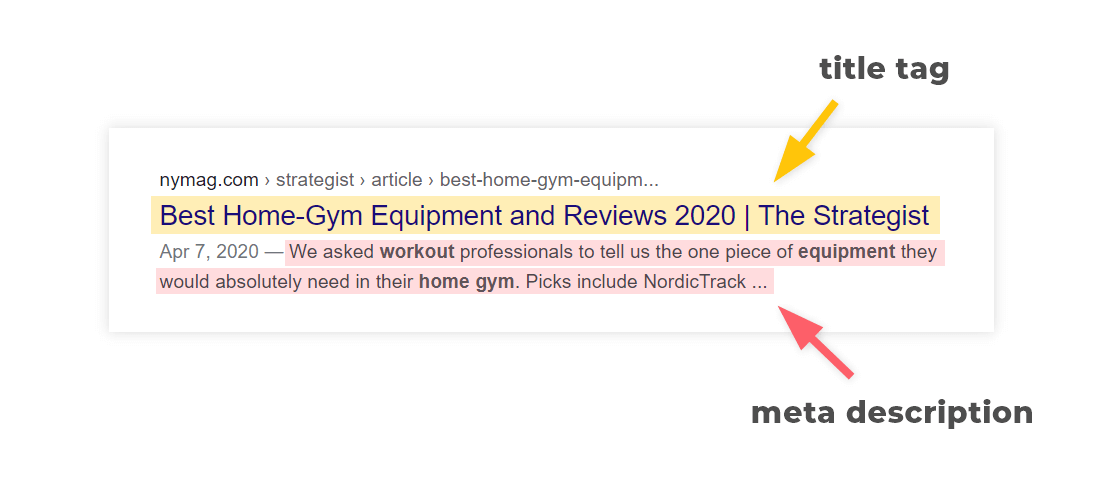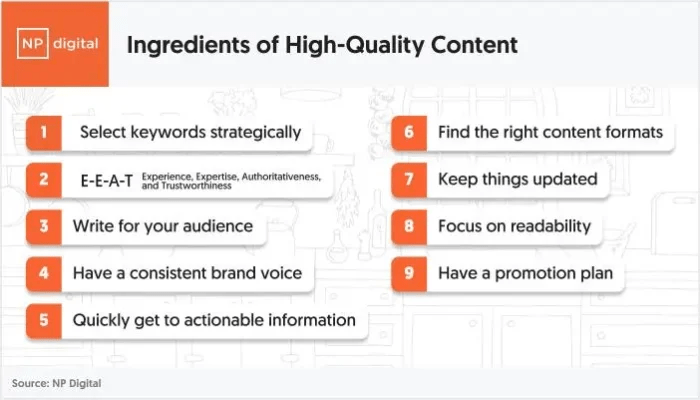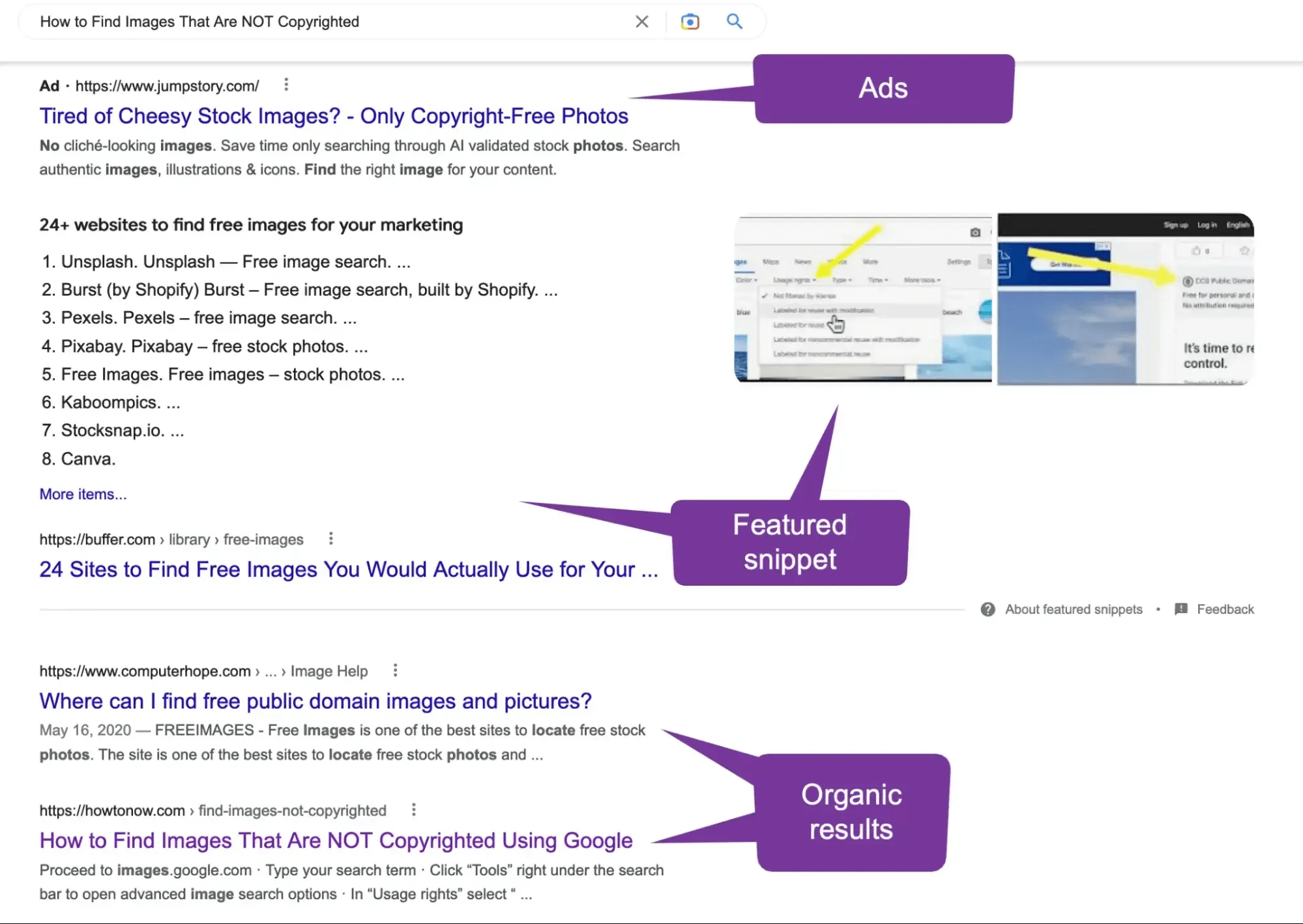
How to Write SEO Blogs for Effective Engagement
How to Write SEO Blogs for Effective Engagement
Every time someone searches for information, there’s a silent competition running in the background. Websites are vying for those top spots on Google, Bing, or DuckDuckGo. Whether you’re writing for a personal project, a bustling e-commerce store, or a news site, SEO blogging remains the backbone of digital communication with audiences. While many see it as a numbers game, the process runs deeper: a successful SEO blog reads naturally, offers genuine value, and works hard behind the scenes to be found.
Understanding the Point of SEO Blogs
Before reaching for the keyboard, it’s worth getting clear about the end goal. At its core, search engine optimisation for blogging is about making your content more findable and useful for the people who need it. This involves a careful balance between writing for humans and formatting for algorithms.
SEO blogs:
- Answer specific questions or problems
- Include keywords and phrases real people are searching for
- Fit into a wider website strategy, encouraging users to stick around
While keywords are important, overusing them turns posts into unreadable strings. The trick is integrating terms so they feel right in context, not like jargon shoehorned into a box.
Comprehensive Guide to Keyword Research
Effective keyword research is the cornerstone of every successful SEO blog. It ensures your content aligns with what your audience is searching for and gives you a competitive edge in your niche. Here’s how to master the process:
Essential Keyword Research Tools
Several tools can help you uncover valuable keywords and assess their potential:
- Google Keyword Planner: Free and reliable for basic keyword ideas and search volumes.
- SEMrush: Offers in-depth analysis, including keyword difficulty, trends, and competitor insights.
- Ahrefs: Excellent for discovering keyword opportunities, analysing competitors, and tracking rankings.
- Ubersuggest: User-friendly and great for finding long-tail keywords.
- Answer the Public: Visualises questions and phrases people are searching for around your topic.
Example Screenshot:

Google Keyword Planner shows keyword ideas and search volumes.
Step-by-Step Keyword Research Methods
- Brainstorm Seed Topics: Start with broad topics relevant to your niche. For example, if you run an outdoor blog, seed topics might include “hiking gear,” “tramping tips,” or “New Zealand trails.”
- Expand with Tools: Enter your seed topics into your chosen tool to generate keyword ideas. Look for variations, questions, and related terms.
- Analyse Metrics: Focus on three key metrics:
3. Search Volume: Indicates how many people search for the keyword each month.
3. Keyword Difficulty: Measures how hard it is to rank for the keyword.
3. Search Intent: Understand what users want when they search that term (informational, transactional, navigational). - Assess Relevance: Choose keywords that align with your audience’s needs and your site’s expertise. Avoid chasing high-volume keywords if they’re not a good fit.
- Check Competitors: See which keywords your competitors rank for. Tools like SEMrush and Ahrefs let you analyse competitor domains for gaps and opportunities.
- Prioritise and Organise: Build a list of primary and secondary keywords for each blog post. Primary keywords should be the main focus, while secondary keywords support and add context.
Example Table:
| Keyword | Monthly Searches | Difficulty | Intent | Notes |
|---|---|---|---|---|
| best hiking gear NZ | 1,000 | Medium | Transactional | Product recommendations |
| how to choose hiking boots | 450 | Low | Informational | Guides and comparisons |
| hiking trails Auckland | 2,000 | High | Navigational | Local track information |
Choosing the Right Keywords for Your Audience and Niche
- Match Language and Intent: Use keywords your audience would naturally type into search engines. For example, a Kiwi audience might search “tramping” instead of “hiking.”
- Balance Volume and Difficulty: Target a mix of low-competition, long-tail keywords for quick wins and higher-volume terms for long-term growth.
- Stay Relevant: Only choose keywords that fit your brand, expertise, and the needs of your readers.
Actionable Tip: Create a spreadsheet to track your keyword ideas, their metrics, and which blog posts target each keyword. This keeps your content strategy organised and focused.
**
Planning Your SEO Blog Structure
A well-organised blog not only appeals to readers but also helps search engines figure out what’s on offer. Outlines give posts direction and prevent mid-draft meandering. A typical SEO blog structure might look like:
- Introduction
- Context or background
- Subtopic 1 (key point/section)
- Subtopic 2
- Subtopic 3 (as needed)
- Brief summary or call to action
Subheadings are more than visual breaks — they help signal to search engines what to take notice of. It’s smart to include main keywords in at least some of these subheadings, but sparingly. Prioritise readability before rigid keyword placement.

Writing Naturally While Optimising
Some of the best SEO blogs never feel forced or stuffed with buzzwords. Here are ways to ensure the writing is both natural and helpful:
- Write to one reader at a time, as if speaking directly
- Use everyday language unless technical terms are needed
- Answer real questions, not just hypothetical ones
- Break up text with lists, tables, and images as appropriate
Every sentence should serve a purpose, moving the reader closer to the answer they’re after. Search engines favour clear, coherent content above keyword-heavy fluff.
The Art of Meta Elements
Every SEO blog needs a great title tag and meta description. These aren’t always visible on the page but play a huge part in clicks from search results.
Good meta elements:
- Are concise (title tag under 60 characters, meta description under 155)
- Include main keywords at the start
- Promise a benefit or outcome
Think of these as invitations to your content rather than technical afterthoughts.

Internal and External Linking
A well-linked blog acts like a map, guiding users to other pieces of value. Internal links keep readers on your site longer, while external links to quality sources add credibility.
Try weaving in:
- Links to related articles or cornerstone pieces on your own site
- References to respected external sources, studies, or tools
Too many links can overwhelm, so choose each one for maximum helpfulness.

The Importance of High-Quality Content for SEO
High-quality content is the foundation of successful SEO. Search engines prioritise content that delivers genuine value to readers, answers their questions, and keeps them engaged. Well-crafted content not only attracts organic traffic but also encourages visitors to stay longer, share your posts, and return for more.
Content Planning: Setting the Stage for Success
Effective content starts with a plan. Begin by identifying your target audience and understanding their needs, pain points, and interests. Use keyword research to discover what your audience is searching for, then map out a content calendar that addresses these topics. Planning ahead ensures your blog remains focused, consistent, and aligned with your broader business goals.
Actionable Tip: Create a monthly content calendar that includes target keywords, topics, and publishing dates. This helps you maintain consistency and ensures you cover a range of relevant subjects.
Structuring Your Content for Maximum Impact
A clear, logical structure makes your content more readable and SEO-friendly. Use headings and subheadings to break up text, bullet points for lists, and short paragraphs for easy scanning. Incorporate relevant keywords naturally within your headings and throughout the body of your post.
Example: Instead of a long block of text, structure your blog post like this:
- Introduction
- Why high-quality content matters
- How to plan your content
- Tips for structuring your blog post
- Keeping your content fresh
- Conclusion
Actionable Tip: Use tools like Hemingway or Grammarly to check readability and ensure your content is easy to digest.
Keeping Content Fresh and Relevant
Search engines favour websites that regularly update their content. Review your existing blog posts periodically to ensure information is current, links are working, and keywords are still relevant. Refreshing old posts with new insights or data can boost their rankings and extend their lifespan.
Actionable Tip: Set a quarterly reminder to audit your top-performing posts. Update statistics, add new examples, and refine your messaging to keep your content at the forefront of your niche.
How SEO Blogs Enhance Overall Website Performance
SEO blogs are more than just a source of fresh content—they are a strategic asset that can elevate your entire website’s performance. By publishing well-optimised blog posts, you create new entry points for organic traffic, strengthen your site’s authority, and improve the user experience across your digital presence.
Integrating Blogs with Your Website’s Architecture
A blog should be seamlessly woven into your website’s structure. This means placing your blog in a logical location (such as yoursite.com/blog) and ensuring it’s easily accessible from your main navigation. Each blog post should be categorised and tagged appropriately, making it simple for users and search engines to find related content.
Actionable Tip: Add a “Blog” link to your primary navigation menu and use categories that reflect your main topics or services. This helps both visitors and search engines understand the breadth of your expertise.
Improving Site Navigation Through Strategic Blogging
Every blog post is an opportunity to guide visitors deeper into your website. By linking to relevant service pages, cornerstone content, or related articles, you keep users engaged and reduce bounce rates. Effective internal linking also distributes authority throughout your site, helping important pages rank higher.
Actionable Tip: Within each blog post, include links to at least two other relevant pages on your site. Use descriptive anchor text that clearly indicates what the linked page is about.
Leveraging Blogs to Boost Domain Authority
Consistently publishing high-quality, informative blog posts signals to search engines that your website is active and authoritative. Over time, as your content earns backlinks and social shares, your domain authority grows—making it easier for all your pages to rank well.
Actionable Tip: Promote your best blog posts on social media and reach out to industry peers for backlinks. Regularly update older posts to keep them relevant and valuable, further strengthening your site’s authority.

Image Source: NP Digital
Formatting for Both Readers and Search Engines
Blocks of unbroken text are hard work for anyone — especially those skimming on mobile screens. Effective formatting uses:
- Short paragraphs
- Subheadings at every logical break
- Bullet points and numbered lists for clarity
- Images with descriptive alt text
Search engines notice when a page is easy to scan and users are sticking around. These details can make all the difference between ranking well and being buried.
Promoting SEO Blogs Through Social Media
Publishing a well-optimised blog is only the first step—amplifying its reach through social media is where you unlock its full potential. Social media channels not only drive direct traffic but also send positive engagement signals that can indirectly boost your SEO performance.
Strategic Content Distribution
Share your blog posts across all relevant platforms, tailoring your approach for each audience:
- Facebook: Write a compelling summary or question to spark discussion. Use eye-catching images and encourage sharing.
- LinkedIn: Highlight key insights or actionable tips from your blog, tagging relevant people or companies to expand reach.
- Instagram: Create a carousel or story featuring main takeaways, and direct followers to your blog via your bio link or swipe-up feature.
- X (Twitter): Share punchy quotes, statistics, or questions from your post. Use relevant hashtags and tag influencers or brands.
- Pinterest: Design a visually appealing pin linking directly to your blog, targeting users searching for inspiration or how-to guides.
Actionable Tip: Schedule posts at optimal times using tools like Buffer or Hootsuite to maintain consistency and reach audiences in different time zones.
Engaging With Followers
Social media is a two-way street. After sharing your blog, actively engage with your audience:
- Respond to comments and questions promptly.
- Ask for feedback or opinions related to your blog topic.
- Join relevant groups or communities and participate in discussions, sharing your blog when it genuinely adds value.
Actionable Tip: Run polls or Q&A sessions based on your blog content to spark deeper conversations and gather ideas for future posts.
Leveraging Social Signals for SEO
While social signals (likes, shares, comments) are not direct ranking factors, they can increase your content’s visibility and likelihood of earning backlinks. The more your blog is shared and discussed, the more likely it is to be discovered by new audiences—including journalists, bloggers, and industry leaders.
Actionable Tip: Encourage sharing by adding social share buttons to your blog and including a call-to-action at the end of each post (e.g., “If you found this helpful, share it with your network!”).

Optimising Content for Featured Snippets
Featured snippets are the highlighted answers that appear at the top of Google’s search results, often referred to as “position zero.” Earning a featured snippet can dramatically increase your visibility and click-through rates. Here’s how to optimise your content to capture these coveted spots.
Formatting Tips for Snippet-Friendly Content
- Answer Questions Directly Identify common questions your audience asks and answer them clearly and concisely within your content. Use natural language and keep answers between 40–60 words for best results.
- Example:How to Start a Blog:
- Choose a blogging platform
- Pick a domain name
- Set up hosting
- Design your blog
- Write your first post
- Example Table:PlatformCostBest ForWordPressFreeCustomisationWixPaidBeginnersMediumFreeWriters/Readers
- Example: What is SEO? SEO stands for Search Engine Optimisation. It is the process of improving your website to increase its visibility in search engine results.
Additional Tips
- Use schema markup to help search engines understand your content structure.
- Place the most snippet-worthy content near the top of your post.
- Review the “People also ask” section in Google for more snippet opportunities.

Measuring Results and Adjusting
SEO blogging works best with feedback loops. Key metrics include:
- Traffic to each post
- Average time spent on page
- Click-through rates from search listings
- Bounce rate and onward clicks
Don’t just glance at numbers. Investigate which parts of a post are holding attention, and which see readers leaving quickly. Experiment with titles, update internal links, and shift keyword placement based on real-world data.
Common Pitfalls to Avoid
SEO isn’t a “set and forget” task. Here are some traps writers fall into:
- Overstuffing: Repeating keywords so often the writing loses flow
- Ignoring mobile formatting: Most readers arrive on phones, not desktops
- Skipping meta tags: Burying great content with a generic title or snippet
- Forgetting intent: Writing only for bots rather than actual people
Readers can sense when they’re being talked at rather than spoken with. Strive for engagement over gimmicks every time.
The Human Factor
Algorithms shape rankings but people decide what’s worth reading. Infusing personality, lived experience, or even local context (like a Kiwi’s perspective on a topic) can make a blog stand out. Relate tips to New Zealand audiences if that’s relevant, use local examples, and stay authentic.
SEO is about finding the right readers, not just the most readers. Precision wins over volume in nearly all cases.
Practical Checklist for Every SEO Blog
Here’s a quick reference to keep you on track before hitting publish:
- Primary keyword and 2–3 related keywords chosen
- Title tag and meta description written with keywords front-loaded
- Headings include keywords naturally
- Engaging introduction written for a real reader
- Clear, scannable structure with logical sections
- Lists, tables, or images used for clarity
- Internal and reputable external links included
- Short paragraphs and sentences for readability
- Alt text for every image
- Post scheduled for regular review and updating
A small amount of discipline here pays off, keeping your posts visible and useful longer.
Can AI Blogs Help with SEO?
The rise of AI-powered writing tools has transformed the way content is created, raising an important question: can AI-generated blogs genuinely help with SEO? The answer is yes, when used thoughtfully and strategically.
The Benefits of AI for SEO Blogging
AI tools can accelerate the content creation process, generate keyword-rich outlines, and even suggest topics based on current search trends. They are particularly effective for:
- Speed and Efficiency: AI can draft articles quickly, allowing you to publish more frequently and keep your website fresh.
- Keyword Optimisation: Many AI tools analyse top-performing content and help naturally integrate target keywords and related phrases.
- Content Ideation: AI can surface trending topics, frequently asked questions, and content gaps, ensuring your blog remains relevant.
Limitations and Best Practices
However, AI-generated content is not a silver bullet. Search engines value originality, depth, and human insight—qualities that AI alone may not fully deliver. To maximise SEO benefits:
- Always Edit and Personalise: Use AI as a starting point, then refine the draft with your expertise, unique voice, and local context.
- Fact-Check and Update: AI can sometimes generate outdated or inaccurate information. Verify facts and add the latest data or examples.
- Focus on Value: Ensure every post genuinely helps your audience, answers real questions, and aligns with your brand’s standards.
The Human-AI Partnership
The most effective SEO blogs combine AI’s efficiency with human creativity and critical thinking. Use AI to handle repetitive tasks—like drafting, keyword research, or formatting—while you focus on strategy, storytelling, and building authentic connections with readers.
Actionable Tip: Experiment with AI tools for brainstorming and first drafts, but always add your own insights and review for quality before publishing.
Taking the Next Step
Great SEO blogs don’t rely only on formulas; they build on curiosity, empathy, and consistent focus on value. Bringing all these factors together isn’t about ticking a checklist. It’s about creating content you’re proud to put your name to — and content Google’s more likely to show to people who’ll genuinely benefit from reading.
That’s what turns occasional visitors into regular readers and gives your website its own distinctive mark in a crowded search results page.
If you have more questions about seo blogs, feel free to contact our seo experts

